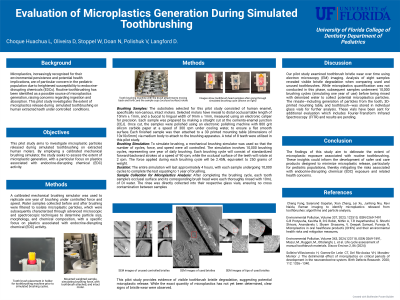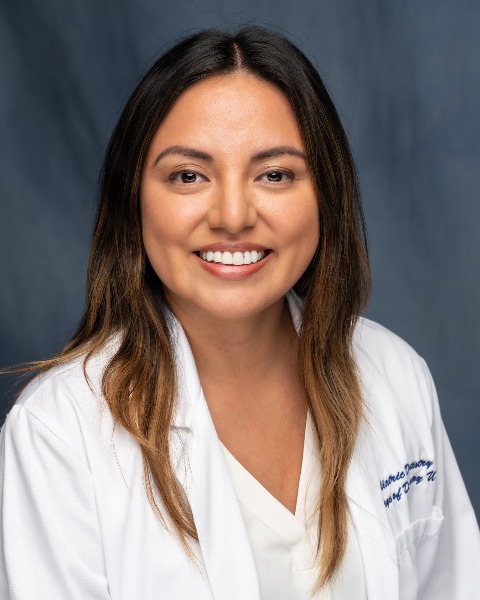Other
328 - Evaluation of Microplastic Generation During Toothbrushing


Laura Choque Huachua, DDS (she/her/hers)
Resident
University of Florida
Gainesville, Florida, United States- DL
David K. Langford, DDS, MDS, BSChE
Clinical Assistant Professor
Univeristy of Florida
Gainesville, Florida, United States - DL
David K. Langford, DDS, MDS, BSChE
Clinical Assistant Professor
Univeristy of Florida
Gainesville, Florida, United States - MC
Matthew Cooke, DDS, MD, MPH
Program director
University of Florida
Gainesville, Florida, United States
Presenting Author(s)
Co-Author(s)
Research Mentor(s)
Program Director(s)
Evaluation of Microplastic Generation During Toothbrushing
Choque Huachua L, Oliveira D, Stoppel W, Doan N, Polishuk V, Langford D
University of Florida College of Dentistry, Gainesville, FL
Purpose: Microplastics, increasingly recognized for their environmental persistence and potential health implications, are of particular concern in pediatric populations due to heightened susceptibility to endocrine-disrupting chemicals (EDCs). Routine toothbrushing has been identified as a possible source of microplastic generation, raising concerns regarding ingestion and absorption. This pilot study investigates the extent of microplastic release during simulated toothbrushing on human extracted teeth under controlled conditions.
Methods: Eight non-carious, intact human molars were subjected to 10,000 brushing cycles using a calibrated mechanical brushing simulator, replicating one year of brushing under controlled force and speed. Water samples collected before and after brushing were filtered to isolate microplastic particles, which were subsequently characterized through advanced microscopic and spectroscopic techniques to determine particle size, morphology, and chemical composition, with a specific focus on plastics associated with endocrine-disrupting chemical (EDC) activity.
Results: Data analysis is underway, with preliminary observations indicating detectable microplastic generation during brushing.
Conclusions: The findings of this study aim to delineate the extent of microplastic exposure associated with routine toothbrushing. These insights could inform the development of safer oral care products designed to minimize microplastic release, particularly for pediatric populations, thereby mitigating the risks associated with endocrine-disrupting chemical (EDC) exposure and related health concerns.
Identify Supporting Agency and Grant Number:

.jpg)